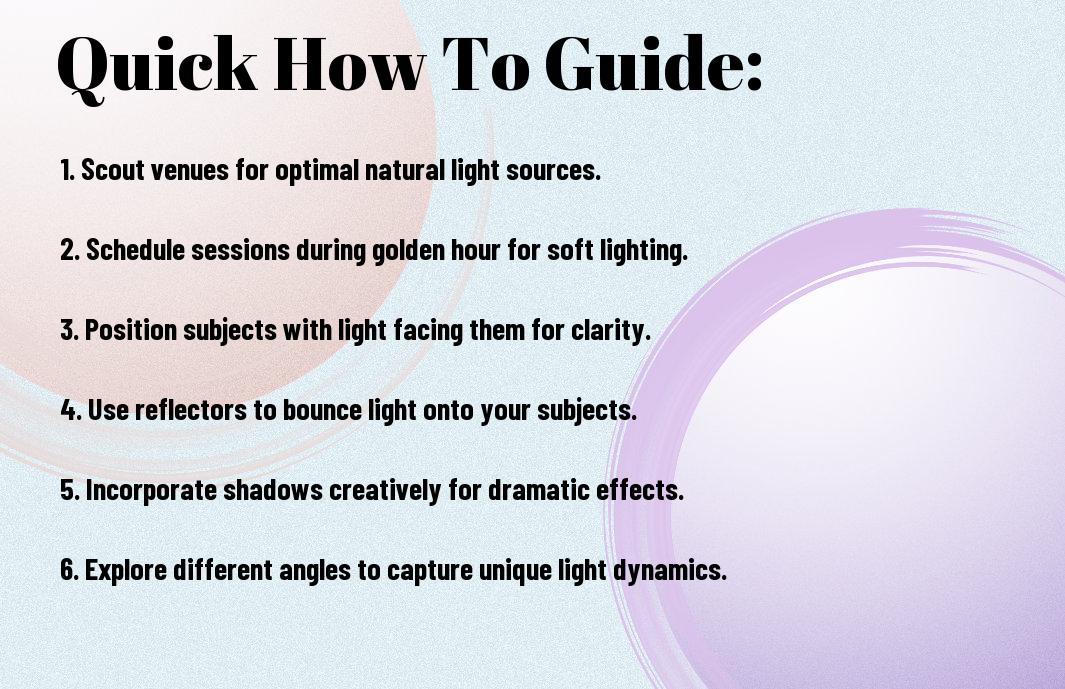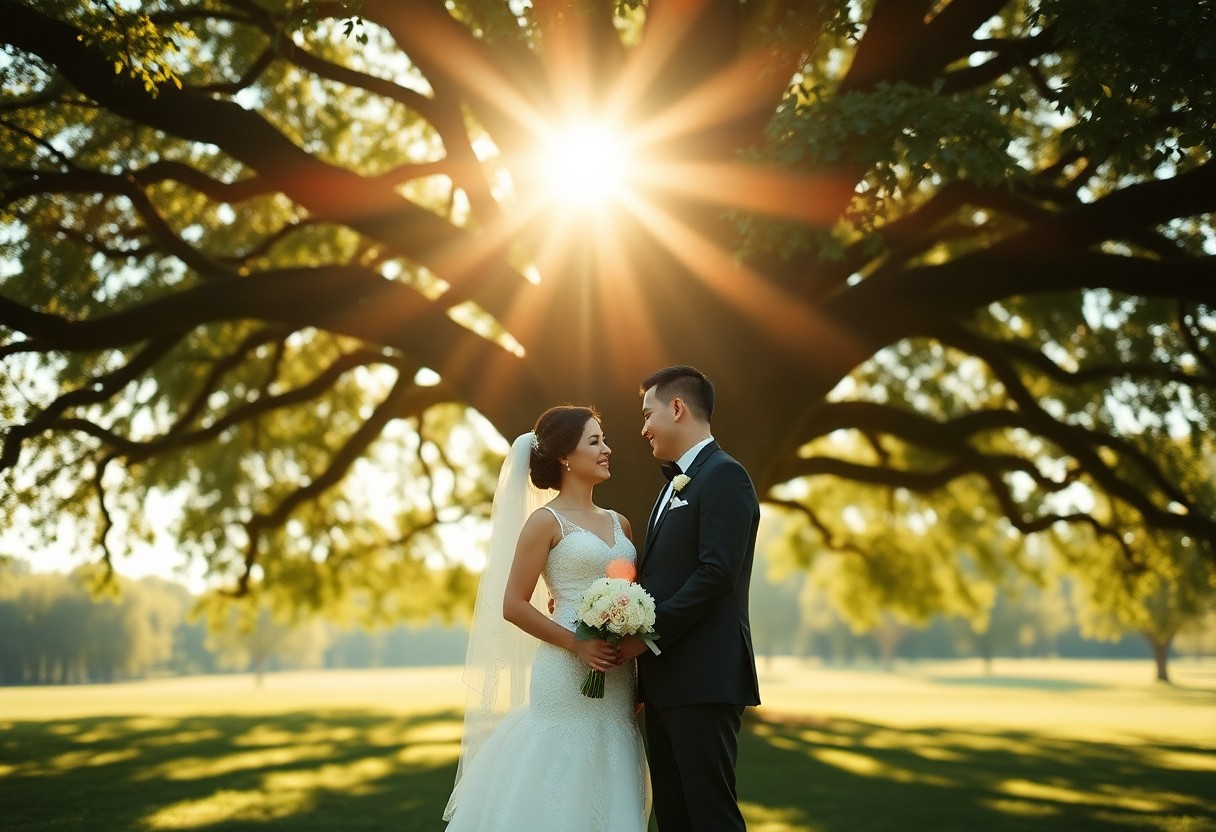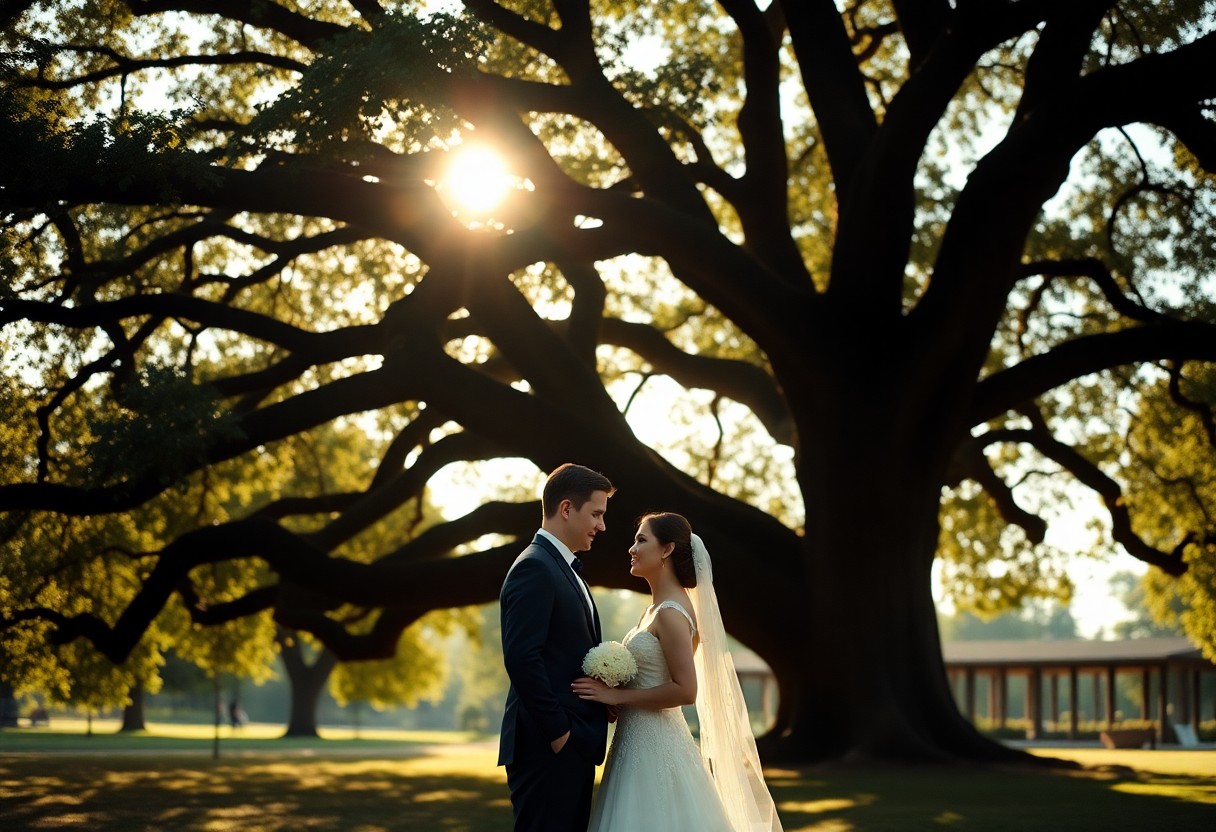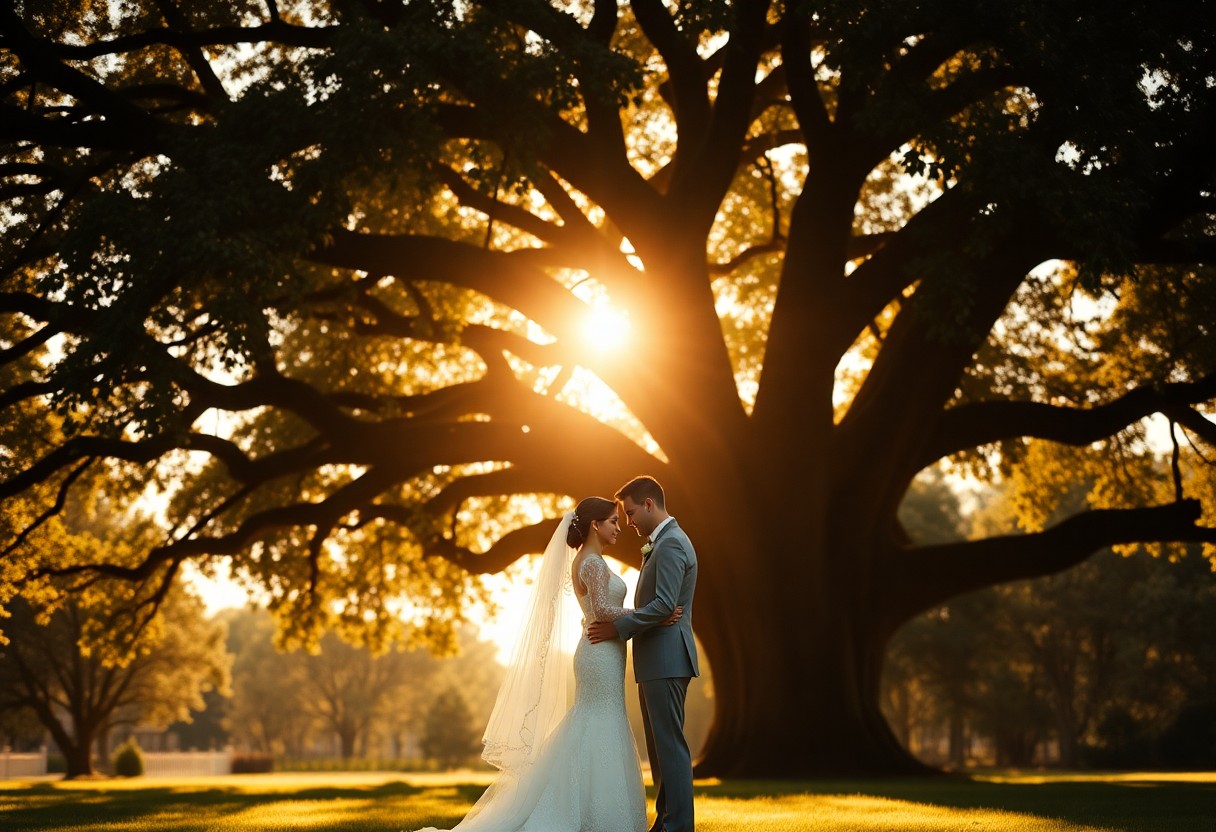Light plays a transformative role in capturing the beauty and romance of your wedding day. By understanding how to harness natural light effectively, you can create stunning and timeless photographs that highlight your special moments. In this guide, you will discover vital tips and techniques to utilize sunlight to its fullest potential, ensuring your wedding images glow with warmth and clarity. Embrace the magic of natural light to elevate your photography and preserve cherished memories for years to come.

Understanding Natural Light
A strong understanding of natural light is important in wedding photography. By recognizing how light interacts with your surroundings, you can create stunning images that highlight the beauty of your special day. Factors such as time of day, weather conditions, and location all play a role in how natural light can enhance or detract from your photographs.
The Importance of Natural Light in Photography
Clearly, natural light adds a unique quality to your photos that artificial lighting often cannot replicate. Using natural light allows you to capture authentic moments filled with warmth and emotion, reflecting the genuine atmosphere of your wedding day. Photographers who harness this element are able to produce timeless images that resonate with your personal style.
Types of Natural Light
Even when it comes to natural light, variations exist that can significantly affect your photos. Understanding the different types can help you choose the best times and locations for your shots. Here’s a simple breakdown:
| Type of Light | Description |
|---|---|
| Soft Light | Diffused, even lighting often found on overcast days. |
| Golden Hour | Warm, illumiated light just after sunrise or before sunset. |
| Harsh Light | Strong, direct sunlight that creates deep shadows. |
| Backlighting | Light coming from behind the subject, creating silhouettes. |
| Shade | Cooler, softer light found under trees or other obstructions. |
- Consider your time of day for optimal light quality.
- Experiment with different angles to enhance your photos.
- Be aware of each light type’s impact on mood and tone.
- Utilize reflectors to manipulate natural light effectively.
- Perceiving these nuances can elevate your photography skills.
Photography thrives on the types of natural light available, influencing your final images immensely. Each type lends itself to various moods and aesthetics, allowing you to express your creative vision. By paying attention to the changing light throughout the day, you can plan ahead for the best possible outcomes.
| Type of Light | Usage Tips |
|---|---|
| Soft Light | Use for romantic portraits with a gentle feel. |
| Golden Hour | Ideal for capturing warm, ethereal scenes. |
| Harsh Light | Consider using it for dramatic effects. |
| Backlighting | Great for creative silhouette shots. |
| Shade | A perfect alternative on bright sunny days. |
- Take advantage of natural reflectors like water surfaces.
- Use shadows to your advantage for depth.
- Combine different light types for innovative results.
- Assess your surroundings to maximize natural light.
- Perceiving how all these elements work together will refine your photographic expertise.

Factors Influencing Natural Light
The quality of natural light at your wedding is influenced by various factors that can enhance or diminish your photography experience. Consider these crucial elements:
- Time of Day
- Weather Conditions
- Location
- Season
After understanding these factors, you can better plan your wedding day for stunning natural light photography.
Time of Day
Even the time of day plays a significant role in the quality of light. The golden hour, shortly after sunrise and before sunset, offers a soft, warm glow that enhances your images. Midday light can create harsh shadows and bright highlights, which may not be flattering for portraits.
Weather Conditions
On your wedding day, weather conditions can greatly affect the natural light available. Overcast skies generally diffuse sunlight, creating a soft and flattering light, while clear blue skies produce bright sunlight that can be intense. Keep an eye on the forecast to make informed decisions about when and where to capture those memorable moments.
Understanding how weather conditions impact natural light is crucial for optimizing your wedding photography. Soft, diffused light on cloudy days often provides flattering images, whereas bright, direct sunlight can lead to harsh shadows. If the weather does not cooperate, consider incorporating shaded areas or backlighting as alternatives, ensuring that your photos remain beautiful regardless of conditions.

Tips for Utilizing Natural Light
Many photographers find great success when they embrace and utilize natural light during weddings. To make the most of this beautiful lighting, consider the following tips:
- Choose the right time of day for softer light.
- Scout locations in advance for optimal lighting.
- Use reflectors to bounce light onto your subjects.
- Incorporate shadows for depth and intrigue.
- Experiment with angles to achieve different effects.
Knowing how to manipulate natural light will elevate your wedding photography to new heights.
Finding the Right Spots
You should explore your venue before the big day to identify the best spots for capturing natural light. Pay attention to areas where light filters gently through trees or windows, creating a soft, romantic atmosphere. Ideal locations can include open fields, gardens, or even shaded areas that catch the light perfectly at different times of day.
Positioning Your Subjects
Some of the most breathtaking wedding photos come from how you position your subjects in relation to natural light. Placing your subjects where natural light creates a glow can highlight their features beautifully while maintaining an ethereal quality in the images.
Tips for effective positioning include having your subjects face toward the light, which can create a radiant effect and add dimension to the shot. Adjusting height and angle while keeping the background in mind can also enhance the composition. Be mindful of shadows that may distract, and always keep communication open with your subjects to ensure they feel comfortable and natural in front of the camera.
How to Enhance Natural Light
Once again, maximizing natural light in your wedding photography depends on your ability to manipulate and enhance the available light. You can achieve stunning results by being mindful of the time of day, the surroundings, and the use of tools to help amplify the natural beauty. Understanding how to make the most of the available light will elevate your images and create a more enchanting atmosphere, allowing you to capture moments that truly tell your love story.
Using Reflectors
To enhance the natural light in your photos, consider using reflectors. These tools bounce light onto your subjects, softening shadows and illuminating faces beautifully. A simple white or gold reflector positioned strategically can create a warm and inviting glow, helping you achieve brighter and more dynamic images without needing additional lighting equipment.
Manipulating Shadows
Even though shadows are often perceived as negative in photography, they can be manipulated to add depth and drama to your images. By positioning your subjects in relation to the light source, you can control how shadows fall, creating striking contrast that enhances textures and highlights the emotion of the moment.
Another way to manipulate shadows is to experiment with the angle of your shots and the positioning of your subjects. Positioning your subjects to face the light source will create a more flattering light, softening shadows, while moving them slightly to the side can add dimension. Don’t be afraid to embrace shadows, as they can help convey mood and add an artistic flair to your wedding photography.
Challenges with Natural Light
After spending time perfecting your wedding photography setup, you may encounter several challenges posed by natural light. Factors like changing weather, the position of the sun, and the time of day can significantly affect your shots. Understanding these challenges allows you to adapt your techniques and ensure you capture stunning photos, regardless of the lighting conditions.
Dealing with Harsh Sunlight
There’s a fine line when working with harsh sunlight, as it can create unflattering shadows and overexposed highlights. To combat this, try scheduling your outdoor sessions during the golden hour—shortly after sunrise or before sunset. You can also use reflectors or diffusers to soften the light and create a more flattering balance in your images.
Managing Low Light Situations
Light conditions can greatly impact the quality of your wedding photography, particularly when it comes to low light environments. You might find yourself needing to adapt your settings quickly to capture those special moments, like candlelit receptions or evening ceremonies.
Light can be quite limited in low-light situations, making it important to use your camera’s capabilities effectively. Adjust your ISO settings for the best exposure, and consider utilizing a fast lens to help gather more light. If possible, bring along a tripod for stability during prolonged exposure times. Additionally, blending natural light with artificial sources can create a warm, romantic ambiance perfect for your wedding photos.

Creative Techniques for Natural Light Photography
Despite the limitations that natural light may present, using creative techniques can elevate your wedding photography. You can find various ways to manipulate light and enhance your images, ensuring that your wedding day looks breathtaking. Embracing different perspectives and incorporating elements of your surroundings will help you make the most of the beautiful sunlight throughout your special day.
Emphasizing Silhouettes
Photography can express mood and emotion powerfully through silhouettes. Position your subjects against a bright backdrop, such as the setting sun, to create striking images that highlight their shape and form. This technique adds drama and elegance, allowing you to capture timeless moments in a unique and artistic way.
Incorporating Backlighting
Techniques that incorporate backlighting can transform ordinary shots into something extraordinary. By placing your subjects with a light source behind them, you can create a glowing halo effect that adds depth and warmth to your photos.
For instance, during sunset, take advantage of the golden hour to capture ethereal images of your couple. Position them in front of the setting sun, allowing the light to illuminate their hair and create a beautiful rim light. This not only adds a dreamy quality to your photographs but also enhances the emotion of the moment, making your wedding album truly unforgettable.
Conclusion
With these considerations, you can enhance your wedding photography by harnessing the power of natural light. Pay attention to the time of day and location to find the best lighting conditions, and don’t hesitate to incorporate reflective surfaces to add depth to your images. Utilize your surroundings creatively and be mindful of shadows to create stunning compositions. By making the most of natural light, you’ll capture beautiful moments that truly reflect the essence of your special day.












